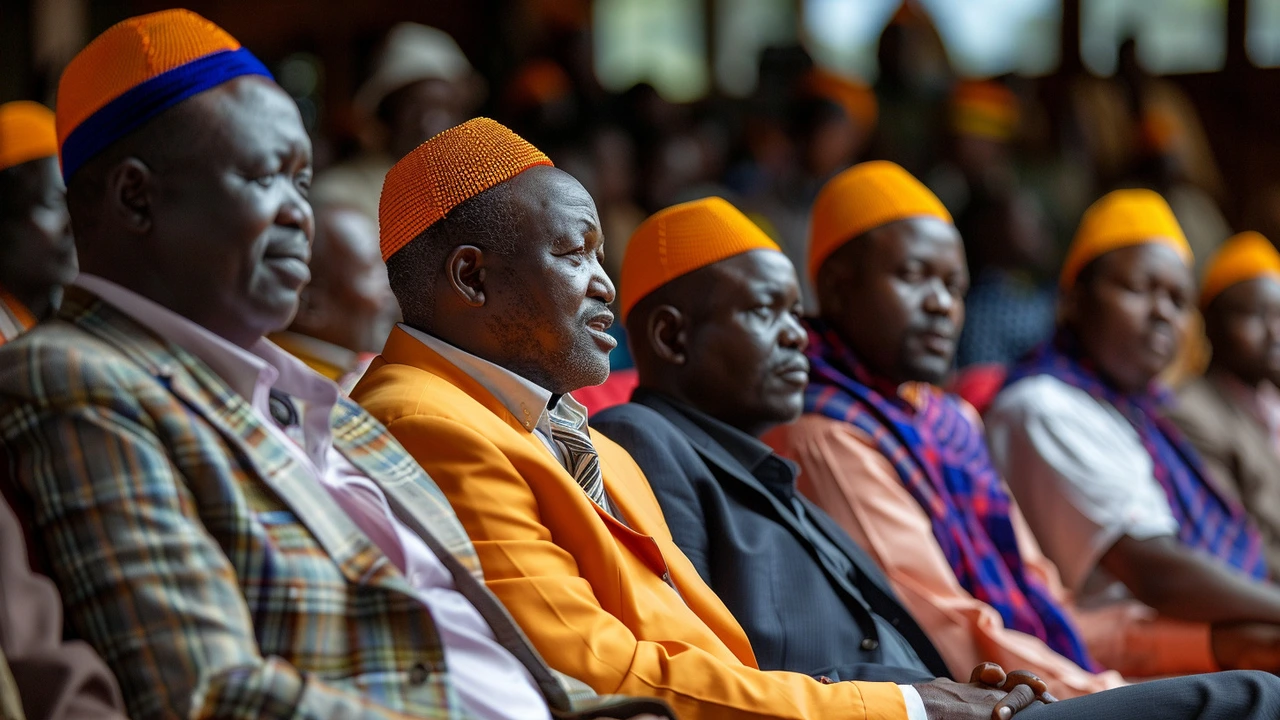The Call for Luhya Unity in Kenyan Politics
During a recent appearance on a high-profile TV show, Wycliffe Oparanya, a key figure in the Orange Democratic Movement (ODM), made a bold proposal targeted at strengthening the political influence of the Luhya community in Kenya. Oparanya's appeal was directed specifically towards Musalia Mudavadi of the Amani National Congress (ANC) and Moses Wetangula of Ford Kenya. He urged these prominent Luhya leaders to consider dissolving their respective parties to unify under the banner of the ODM. This proposed consolidation, according to Oparanya, is crucial for the Luhya community to command a more potent political voice in the national arena.
Strategic Importance of Luhya Unity
The Western region of Kenya, where the Luhya community predominantly resides, boasts a significant voter base that could indeed play a pivotal role in shaping the outcome of future elections. Oparanya articulated how a united Luhya political front could leverage this demographic weight to exert greater influence and achieve more considerable gains in national development. He stressed that the fragmented approach currently employed by Luhya political leaders dilutes their potential impact, advocating instead for a unified strategy to consolidate their resources and amplify their voice.
Rationale Behind the Unification Call
Oparanya’s call comes in the wake of the recent unity pact between the Azimio la Umoja One Kenya Coalition Party and the Kenya Kwanza Alliance, further emphasizing the shifting dynamics in Kenyan political alliances. By uniting under a single political entity, Oparanya believes that the Luhya leaders can maximize their strategic advantage and potentially steer the political discourse, particularly in legislative and executive decisions. These moves are viewed as necessary steps towards enhancing the socio-economic status of the Western region and by extension, better representing the interests of the Luhya community on a national scale.
Implications of Luhya Political Unity
If Mudavadi and Wetangula heed Oparanya's call, it could significantly alter the political landscape in the Western region of Kenya. Analysts speculate that such a unification could disrupt traditional voting patterns and alliances, paving the way for new political narratives and campaigns tailored to the needs and aspirations of the Luhya community. However, the willingness of Mudavadi and Wetangula to dissolve their established political platforms in favor of a collective under ODM remains uncertain. Their decision will likely hinge on extensive negotiations and assurances of equitable representation and influence within the ODM framework.
Challenges and Potential Obstacles
The path to political unification is fraught with challenges. Issues of leadership, party loyalty, ideological alignments, and the preservation of political legacies will play significant roles in the discussions between these Luhya leaders. Moreover, the reception of this idea among the grassroots supporters of ANC and Ford Kenya could influence the decision-making process. These supporters have vested interests and may harbor reservations about merging with ODM, fearing loss of identity and dilution of their specific agendas.
Next Steps Towards Unity
For Oparanya’s vision of a unified Luhya political front to materialize, a series of dialogue sessions and consultations with key stakeholders within the Luhya community and the broader political landscape will be necessary. Establishing trust, transparent communication, and clear benefits to all parties involved will be crucial in moving forward. The success of this unification effort not only depends on the decisions of the leaders but also on the acceptance and active support from their constituents. The forthcoming months will be critical in determining whether the Luhya community can forge a united front and transform its political destiny or continue navigating the complexities of Kenyan politics as divided entities.
